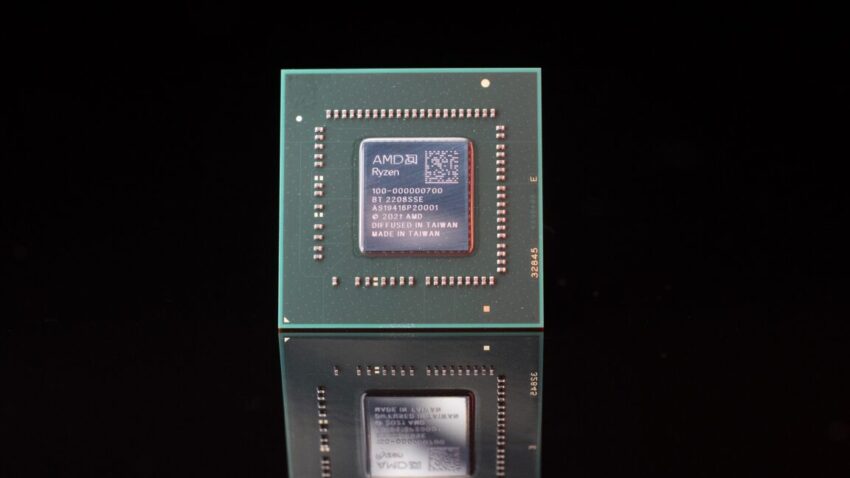
amd shores up its budget laptop cpus AMD has recently rebranded several of its older Ryzen laptop processors, a move that highlights the ongoing challenges in the semiconductor industry.
amd shores up its budget laptop cpus
Background on Semiconductor Manufacturing Challenges
The semiconductor industry has been undergoing significant transformations in recent years, driven by advancements in technology and increasing demand for more powerful and efficient chips. However, these advancements come at a cost. Newer manufacturing processes, particularly those below the 7nm node, have become increasingly complex and expensive to develop. This has led to a situation where companies like AMD and Intel find themselves in a bind, needing to balance innovation with cost-effectiveness.
As a result, both AMD and Intel have resorted to rebranding older processors under new model numbers. This strategy allows them to present what appears to be a fresh lineup of products while utilizing existing silicon designs. This practice has raised concerns among consumers, particularly those in the budget and midrange laptop markets, who may find it difficult to distinguish between genuinely new products and rebranded older models.
AMD’s Latest Rebranding Move
Recently, AMD has rebranded a range of its Ryzen laptop chips, a move that has not gone unnoticed in the tech community. According to a report by Tom’s Hardware, AMD has introduced new model numbers for its processors without making any changes to the underlying silicon. The rebranded processors utilize either Rembrandt-R silicon, which features Zen 3+ CPU cores and RDNA 2 graphics cores, or Mendocino silicon, which employs Zen 2 CPU cores alongside RDNA 2 graphics cores.
Understanding the Silicon Architectures
To fully grasp the implications of AMD’s rebranding, it is essential to understand the architectures involved:
- Rembrandt-R: This architecture was initially launched as part of the Ryzen 6000 series in 2022. It features the Zen 3+ CPU cores, which offer improved performance and efficiency compared to their predecessors. The RDNA 2 graphics cores integrated into this architecture provide enhanced graphical capabilities, making it suitable for a range of applications from casual gaming to productivity tasks.
- Mendocino: This architecture is slightly older, with its Zen 2 CPU cores dating back to 2019. While it may not offer the same level of performance as the newer Zen 3+ cores, it still provides a solid foundation for budget laptops. The RDNA 2 graphics cores included in this architecture also help to improve the overall graphical performance, allowing for a better user experience in multimedia tasks.
Both architectures were first introduced in 2022, but the use of Zen 2 in the Mendocino architecture raises questions about the longevity and relevance of these processors in a rapidly evolving market.
Market Implications
The rebranding of these processors is particularly significant in the context of the competitive landscape. AMD’s rebranded chips will primarily compete with Intel’s non-Ultra Core 100 series processors, which also utilize 2022-vintage Raptor Lake silicon. This competition is crucial as both companies vie for market share in the budget and midrange laptop segments, where consumers are often looking for the best value for their money.
For consumers, the rebranding can create confusion. Many may assume that a new model number signifies a new and improved product, when in reality, they may be purchasing a processor that is several years old. This is especially pertinent for budget-conscious shoppers who may not have the technical knowledge to discern the differences between various architectures and their respective performance capabilities.
Stakeholder Reactions
The reactions to AMD’s rebranding strategy have been mixed. On one hand, some industry analysts argue that this approach allows AMD to maintain a competitive edge without incurring the high costs associated with developing entirely new silicon. By leveraging existing designs, AMD can continue to offer products that meet consumer demand while managing its resources effectively.
On the other hand, consumer advocacy groups and tech enthusiasts have expressed concerns about the transparency of such practices. They argue that rebranding older processors under new model numbers can be misleading, potentially leading consumers to make uninformed purchasing decisions. This sentiment is echoed in various online forums and social media platforms, where users have voiced their frustrations over the lack of clarity in product naming conventions.
The Broader Context of Rebranding in the Tech Industry
AMD’s rebranding of its processors is not an isolated incident. The practice of rebranding older technology is prevalent across the tech industry, particularly in sectors where rapid advancements are commonplace. Companies often face pressure to deliver new products to meet consumer expectations, and rebranding can serve as a stopgap measure to fill product gaps in their lineups.
This trend raises important questions about the ethics of rebranding in the tech industry. While it may be a practical solution for companies, it also places the onus on consumers to conduct thorough research before making a purchase. As technology continues to evolve, the need for transparency and clear communication from manufacturers becomes increasingly critical.
Future Outlook for AMD and the Semiconductor Industry
Looking ahead, AMD’s strategy may evolve as the company navigates the complexities of the semiconductor landscape. With increasing competition from Intel and other players, AMD will need to balance innovation with cost management effectively. The company’s ability to deliver genuinely new products while also leveraging existing technology will be crucial in maintaining its market position.
Moreover, as manufacturing processes become more advanced and costly, it is likely that rebranding will continue to be a common practice among chipmakers. This trend underscores the importance of consumer awareness and education, as buyers must remain vigilant in understanding the products they are purchasing.
Conclusion
AMD’s recent rebranding of its Ryzen laptop processors serves as a reminder of the challenges and complexities facing the semiconductor industry. While this strategy may provide short-term benefits for the company, it also raises important questions about transparency and consumer trust. As the market continues to evolve, both AMD and Intel will need to navigate these challenges carefully to ensure they meet the needs of consumers while maintaining their competitive edge.
Source: Original report
Was this helpful?
Last Modified: October 29, 2025 at 4:38 am
2 views















